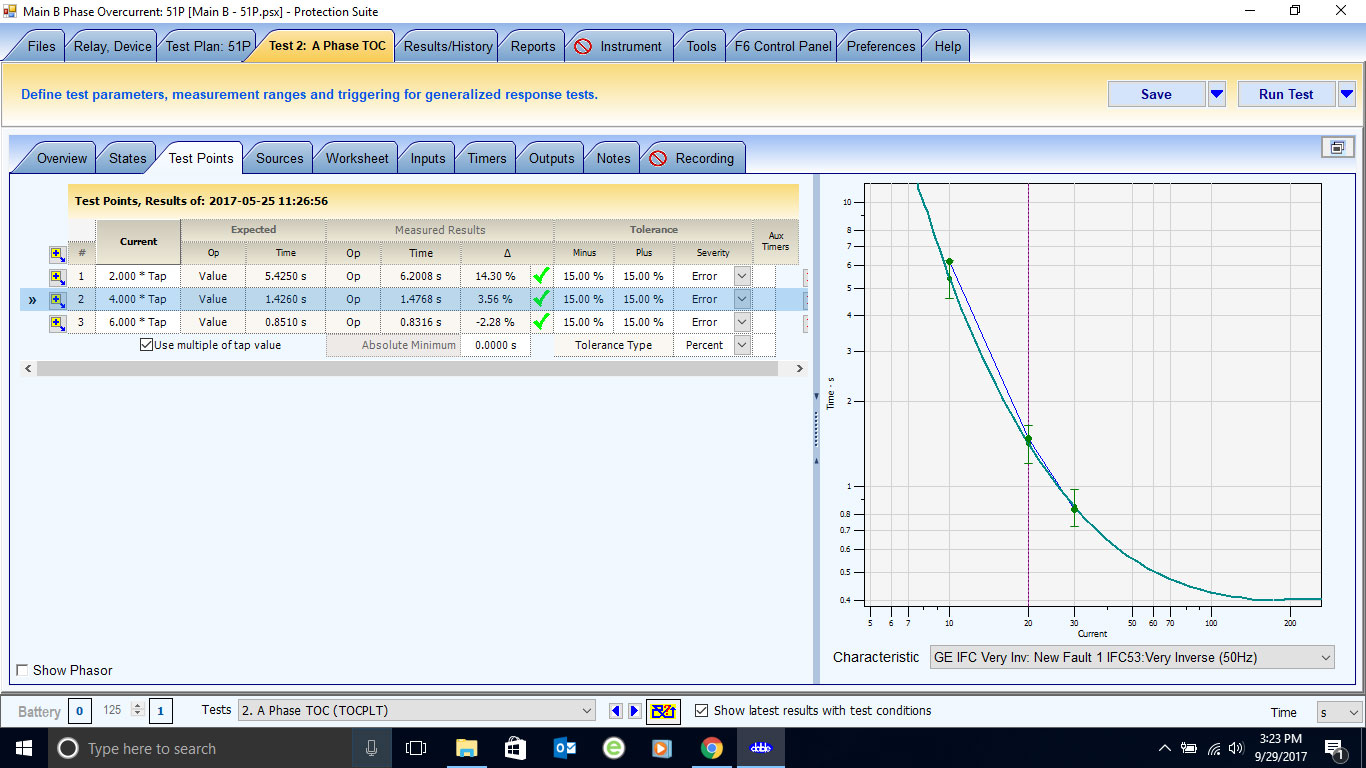Electromechanical Relay Operation
Above is a brief video of an electromechanical relay operating at 3 different fault magnitudes. These fault magnitudes are based off of the relay setpoint – 200% fault, 400% fault, and 600% fault. The relay set point is based off of the CT ratings and the bus/cable/load ampacity ratings.
Electromechanical Curve Shape
In the image below, a “Very Inverse (VI)” curve was plotted. The y-axis is Time, and the x-axis is Current. If you have a low magnitude fault, roughly around 200%, and the relay time delay setpoint is set at 4, it will take around 6 seconds to trip. As you increase your fault magnitude, the trip times decrease based off the very inverse curve shape. A fault magnitude in the 600% range will take roughly .85 seconds.
You have to remember that most faults will result in high current and will most likely cause the relay to trip the breaker within a few cycles. You want to clear the fault quickly to minimize damage to people or equipment. You also want to do it in an orderly fashion.
This is the reason coordination studies are important. Isolation of the fault without losing all power is what is trying to be accomplished.


3 comments on “Electromechanical Relay – Basic Operation”
Very useful article sir, but there are few others ways to test a relay with a multimeter here is an article that can also help your users.
Thanks for uploading great stuff.
The type of relay you are referring to is not classified as an electromechanical relay. While the link you posted is a great article to reference, it is a different kind of relay. An ice cube relay, or auxiliary relay (a relay that operates by energizing a coil to change the state of the contacts) is the kind of relay you are referencing. A multimeter on those types of relays will show which contacts are closed or open and you can compare your findings to the nameplate on the specimen under test.